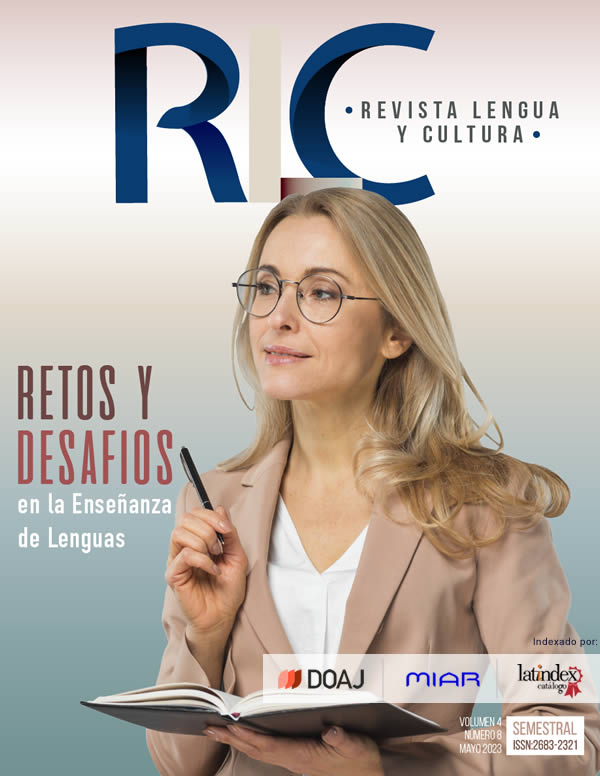A mobile learning prototype for an English subject
Abstract
Digital methodologies in distance education have been defined by innovating in the inclusion of pedagogical strategies through applications and tools that allow ubiquity and openness to learning, some of these methodologies are the responsive web design and mobile learning, both technologies complement each other pedagogically and are essential for virtual education. The use of these technologies provide several advantages in teaching, such as promoting collaborative learning, facilitating communication, enhancing the learning process, promoting autonomy, among others. To achieve the above, the design and implementation of mobile responsive learning will be implemented in an English subject taught in an undergraduate program at the Autonomous University of the State of Hidalgo. This implementation consisted of including mobile learning strategies and the theoretical foundation of the application of this educational technology was carried out through the responsive web design methodology that allows providing a positive adaptation in virtual learning environments. For the implementation, it was decided to use an authoring tool such as Gomo Learning that, through its free use, allows an accurate visual approach to responsive learning. Finally, due to the complexity of its adaptation to language teaching, accurate and detailed training in the use of these digital methodologies within teacher training must be strengthened to enhance mobile learning.
Downloads
Literaturhinweise
Díaz-Barriga, F., & Hernández, G. (1999). Estrategias docentes para un aprendizaje significativo. McGrawHill. Obtenido de http://prepatlajomulco.sems.udg.mx/sites/default/files/estrategias_de_aprendizaje.pdf
Flores, J., Ávila, J., Rojas, C., Sáez, F., Acosta, R., & Díaz, C. (2017). Estrategias didácticas para el aprendizaje significativo en contextos universitarios. Chile: Universidad de Concepción. Obtenido de http://docencia.udec.cl/unidd/images/stories/contenido/material_apoyo/ESTRATEGIAS%20DIDACTICAS.pdf
García, L. (2017). Educación a distancia y virtual: calidad, disrupción, aprendizajes adaptativo y móvil. RIED. Revista Iberoamericana de Educación a Distancia, 20(2), 9-25. Obtenido de https://www.redalyc.org/pdf/3314/331453132001.pdf
Penalosa, E., Castañeda, S., & Ramírez, L. (2016). El aprendizaje móvil: revisión de dimensiones y propuesta de un modelo teórico. ResearchGate, 1-13. Obtenido de https://www.researchgate.net/profile/Sandra-Figueiras/publication/309204159_El_aprendizaje_movil_revision_de_dimensiones_y_propuesta_de_un_modelo_teorico/links/5805279a08aef87fbf3bbbe5/El-aprendizaje-movil-revision-de-dimensiones-y-propuesta-de-un-modelo-
PIL. (2013). Centro de Lenguas. Obtenido de https://www.uaeh.edu.mx/adminyserv/gesuniv/div_docencia/dui/pil.html
Shift. (2017). Shift Disruptive Elearning. Obtenido de https://cdn2.hubspot.net/hubfs/159642/shift_ebook_Agosto2015_ESP.pdf?__hssc=5681644.33.1484061458110&__hstc=5681644.6b75168f926a329da6fc806ded46d3f6.1482877829307.1482877829307.1484061458110.2&__hsfp=3384225188&hsCtaTracking=9da4a027-e9bb-47cc
Shift. (25 de Septiembre de 2019). Por qué el responsive eLearning es esencial para satisfacer las necesidades del estudiante moderno. Obtenido de Shift Disruptive Elearning: https://www.shiftelearning.com/blogshift/responsive-elearning-estudiante-moderno
UNED. (2018). Consideraciones para la selección de estrategias ytécnicas que pueden utilizarse en las herramientas de la plataforma virtual de la UNED. Costa Rica: UNED. Obtenido de https://www.uned.ac.cr/dpmd/pal/images/documentos/Profesores/consideraciones-seleccion-estrategias.pdf
Copyright (c) 2023 Veronica Espino Barranco

Dieses Werk steht unter der Lizenz Creative Commons Namensnennung - Nicht-kommerziell - Keine Bearbeitungen 4.0 International.













